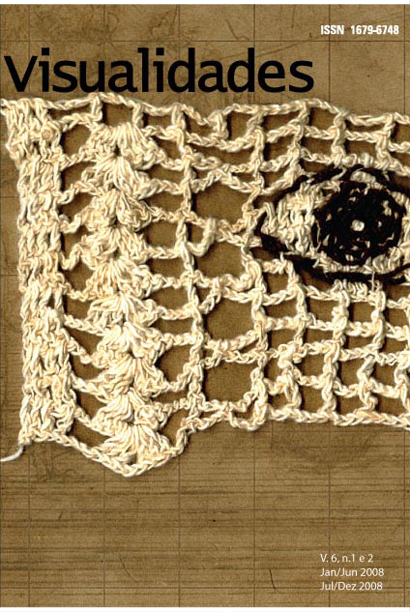Casa de bricoleur: invenção na estética popular - DOI 10.5216/vis.v6i1eI2.18100
DOI:
https://doi.org/10.5216/vis.v6i1ei2.18100Abstract
Esta pesquisa tem como tema a estética da bricolagem em arquiteturas inventadas e construídas pelos próprios moradores. O foco é no imaginário popular que transforma fragmentos em matéria preciosa para a criação. O imaginário, dimensão fundamental das criações do pensamento humano, é rede de imagens na qual o sentido emerge das relações entre elas. Os “construtores do imaginário” metamorfoseiam lixo em arte, caquinho em beleza, e criam casas com restos de construções, pedaços de louça e vidro, lâmpadas queimadas, moedas anti-gas, e uma série de objetos considerados imprestáveis - sobras da sociedade de consumo. A “estética do descartável” é também condição de sobrevivência, astúcia popular que afirma a inventividade própria das táticas, onde a ordem das coisas é desviada dos fins a que antes eram designadas. A bricolagem tem a ver com o acaso e a incompletude: é o acontecimento imprevisto. O bricoleur, neste caso, é aquele que remenda coisas e faz objetos com pedaços de outros objetos. Exemplos desta estética são: a Casa da Flor, de Gabriel Joaquim dos Santos, e a casa de Estevão Silva da Conceição, o “Gaudí brasileiro”. A casa de bricoleur é um organismo vivo, um corpo poético em contínuo estado de transformação.
Palavras-chave: Bricolagem, imaginário popular, estética
Downloads
Downloads
Published
How to Cite
Issue
Section
License

This work is licensed under a Creative Commons Attribution 4.0 International License .
Authors who publish in this journal agree to the following terms:
a. Authors retain the copyright and grant the journal the right of first publication, with the work simultaneously licensed under the Creative Commons Attribution 4.0 License which allows the sharing of work with acknowledgment of authorship and initial publication in this journal.
b. Authors are authorized to take additional contracts separately, for non-exclusive distribution of the version of the work published in this journal (eg publish in institutional repository or as a book chapter), with acknowledgment of authorship and initial publication in this journal.
c. Authors are allowed to publish and distribute their work online (eg in institutional repositories or on their personal page) after the initial publication in this journal, as this can generate productive changes, as well as increase the impact and citation of the published work ( See The Effect of Free Access).
Every effort has been made to identify and credit the rights holders of the published images. If you have rights to any of these images and have not been correctly identified, please contact the Visuals magazine and we will publish the correction in one of the next issues.






